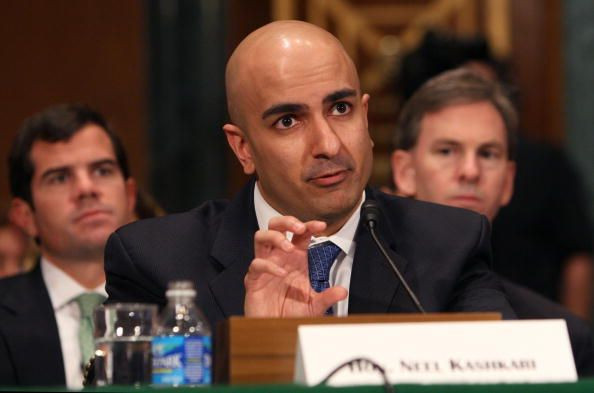New Fed Official Warns Biggest Banks ‘Still Too Big To Fail’

Neel Kashkari, the newest member of the Federal Reserve’s inner circle of regional bank presidents, made a splash with his first public speech Tuesday, warning that “the biggest banks are still too big to fail and continue to pose a significant, ongoing risk to our economy.”
It wasn’t just a warning, though. The Minneapolis Fed president announced the launch of an “actionable plan to end TBTF,” or too-big-to-fail, which would consider options including taxing banks that have excess leverage and directly breaking up the largest, most connected institutions.
A veteran of the financial crisis who oversaw the Troubled Asset Relief Program, or TARP, Kashkari said the 2010 Dodd-Frank Act had not gone far enough in ensuring that major banks have enough capital and emergency controls to withstand a crisis. “Now is the right time for Congress to consider going further than Dodd-Frank with bold, transformational solutions to solve this problem once and for all,” he said.
The speech comes as the Democratic Party finds itself embroiled in an ideological battle between presidential primary contenders Hillary Clinton and Bernie Sanders, who have offered divergent views on the regulation of Wall Street.
While both have proposed moving beyond the Dodd-Frank financial reforms, Sanders, a self-described democratic socialist, has forcefully advocated the immediate dissolution of the largest American banks. Clinton has supported the existing, somewhat limited authority that regulators have to break up banks should they be deemed too unwieldy. The six largest banks by total assets are JPMorgan Chase, Bank of America, Citigroup, Wells Fargo, Goldman Sachs and Morgan Stanley.
In his speech to the Brookings Institution in Washington, D.C., Tuesday, Kashkari advocated for a more dramatic course of action. “Given the enormous costs that would be associated with another financial crisis and the lack of certainty about whether these new tools would be effective in dealing with one, I believe we must seriously consider bolder, transformational options,” Kashkari said.
As an analogy, Kashkari pointed to the strict regulation of nuclear reactors. “The cost to society of letting a reactor melt down is astronomical,” said Kashkari, who began his career at Goldman Sachs, the fifth-largest U.S. bank by assets, and ran as a Republican in 2014 for governor of California. “Given that cost, governments will do whatever they can to stabilize the reactor before they lose control.”
Kashkari, one of 12 regional Fed presidents, isn’t the first central banker to advocate for the breakup of the largest financial institutions. Last year, Fed Chair Janet Yellen said that banks being forced by new regulations to split into pieces was “exactly what we want to see happen.”
© Copyright IBTimes 2024. All rights reserved.




















